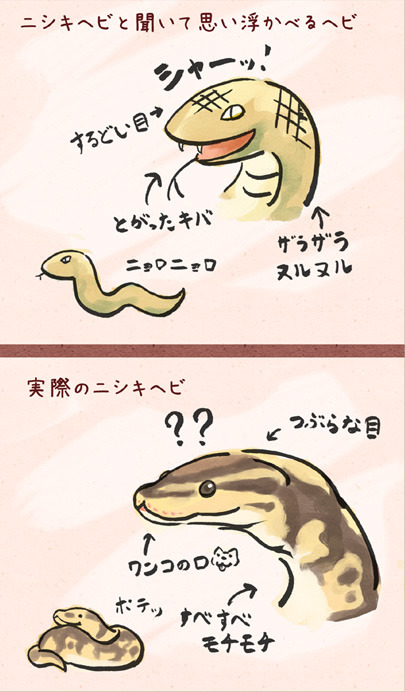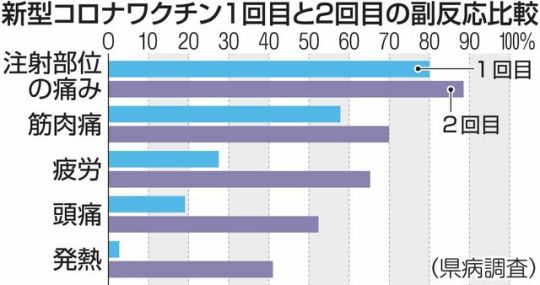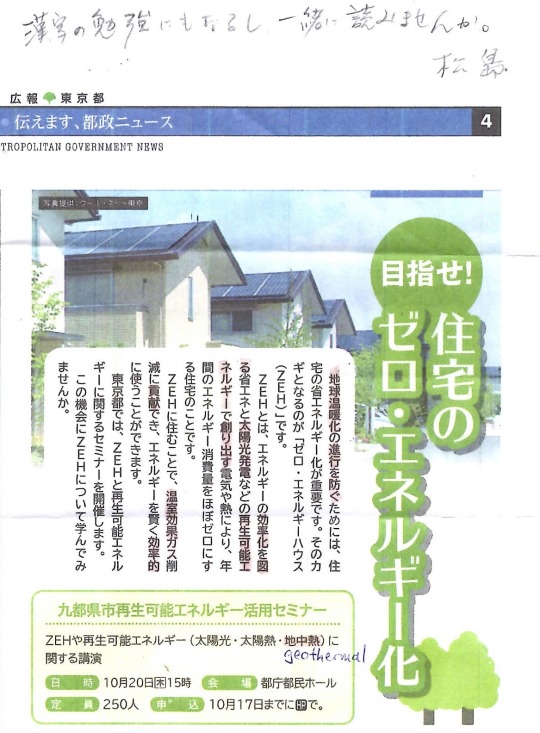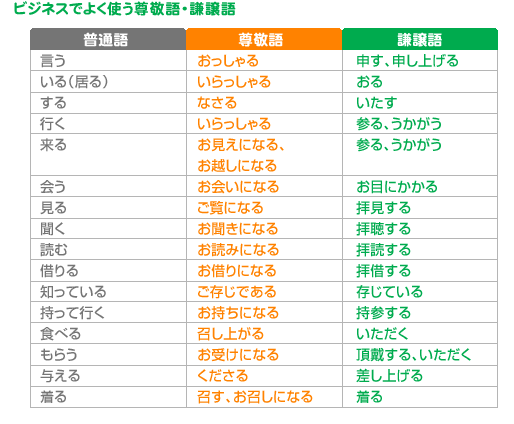Leah リア // 21才 // Studying zoology in the UK but dreaming of Japan / Please let me know if you find any mistakes in my posts!
Don't wanna be here? Send us removal request.
Text
YouTube Channels for Kids by JLPT Levels
(。•̀ᴗ-)✧ resources

こんにちは, Japanese learners! Learning a language is an exciting adventure, isn't it? To add a spark of joy to your Japanese learning journey, here's a collection of YouTube channels tailored for kids. Organized by JLPT levels, these channels offer a blend of education and entertainment for learners at different stages. Keep in mind, though, that JLPT levels aren't an exact science like math – language learning can be subjective in terms of difficulty. However, these resources provide a fantastic starting point and a fun way to explore the world of Japanese language and culture. Let's hop into this delightful world of animated learning and playful discoveries!
Friendly reminder to adjust your way of learning in order to make the most of what you're studying to reach the goal you truly want! read my post about it (ᵔ◡ᵔ)
꒰ა ˚₊ ✧・┈・╴N 5 ╴・┈・𐑺 ‧₊˚໒꒱
— Curious George (N5 level)
— Japanese folk tales/anime series (Japanese audio/Japanese subtitles) from BomBom Academy (N5 level)
— Peppa Pig (N5-4 level)
— Anpanman (N5-4 level)
— NHK education (N5-4 level)
꒰ა ˚₊ ✧・┈・╴N4 ╴・┈・𐑺 ‧₊˚໒꒱
— Cinnamon Roll, Sanrio (N4 level)
— [Anime] Atashin'chi (N4-3 level)
꒰ა ˚₊ ✧・┈・╴N3 ╴・┈・𐑺 ‧₊˚໒꒱
— Sesame Street Japan (N3 level)
— Chibi Maruko Chan (N3-2 level)
꒰ა ˚₊ ✧・┈・╴N2 ╴・┈・𐑺 ‧₊˚໒꒱
— Precure (N2 level)
またね~@inkichan
꒰ა ˚₊ ✧・┈・╴﹕꒰ ᐢ。- ༝ -。ᐢ ꒱﹕╴・┈・𐑺 ‧₊˚໒꒱
814 notes
·
View notes
Text

(image source)
くまのみ - clownfish インギンチャク - sea anemone ひとで - starfish うみがめ - sea turtle 引っ込める (ひっこめる) - to draw in, to retract, to withdraw 陸 (りく) - land はりせんぼん - porcupine fish 針 (はり) - needle, spine 本 (ほん) - counter for 針 ふぐ - puffer fish うみねこ - black-tailed gull (most common seagull in Japan) 気が合う (きがあう) - to get along with くらげ - jellyfish 彩る (いろどる) - to color
#learn japanese#japanese vocabulary#sumikko gurashi#japanese language#san-x#study japanese#cute comics#reading practice
191 notes
·
View notes
Text

叱る (しかる) - to scold
散らかす (ちらかす) - to leave untidy, to make a mess
貯金 (ちょきん) - savings
いたずらを仕掛ける (しかける) - to play a trick/joke/prank on いたずらを仕掛けられる - to have a prank played on you
38 notes
·
View notes
Text

どこからともなく - suddenly (appear) out of nowhere
やんちゃ - naughty, mischievous
#learn japanese#study japanese#japanese vocabulary#japanese language#reading practice#cute comics#san-x#rilakkuma
19 notes
·
View notes
Text

(image source)
ポイする - to throw something away くしゃくしゃ - crumpled, disheveled ごっくん - gulp 能天気 (のうてんき) - optimistic, carefree 乱暴 (らんぼう) - rough, violent すててこ - knee-length shorts usually worn under pants, mainly by men
#san-x#learn japanese#learning Japanese#study japanese#japanese vocabulary#reading practice#kawaii comics
31 notes
·
View notes
Text
Yes yes YES. This is why I’ve always used mainly native Japanese resources to study, and generally only used learning materials for the basics and some grammar. I 100% recommend it, and to be skeptical of example sentences.
In contrast to the part about “sowing the seeds of bad Japanese”, I’ve seen advice that you should just practice as much as possible and get your point across whatever way you can without worrying if you’re correct or not. While I do agree you shouldn’t get too caught up in making sure you’re always speaking perfectly (because that’s simply not realistic as a learner), for the most part I’ve never been able to comfortably follow that advice. I don’t want to use bad Japanese, get it stuck in my head, and then have to relearn it. My goal in learning Japanese is to be fluent and sound like a native, not simply to speak it (though it’s totally okay if that’s what your goal is), so learning unnatural Japanese is counterproductive.
(Let me know if you’d like recommendations for native Japanese material to study with!)
INTERMEDIATES! THE CAKE WAS A LIE!
I found a quote from AJATT that perfectly sums up this week for me.
"This does not involve looking at an English sentence and translating it into Japanese. Do not translate from English to Japanese. Why? Well, because there are so many possible translations for a given sentence, how are you going to say which is right and which is wrong? Are you only going to count the one you’ve got written down? That’s too restrictive and too failure-prone. What’s more, if you get the Japanese sentence wrong, you haven’t just made a mistake, you’ve sown the seeds of bad Japanese. Good Japanese starts with mindlessly imitating good Japanese. Don’t go inventing your own Japanese; no one will understand you. You’ll be doing the Japanese equivalent of “all your base are belong to us” (Japanese discussion of the same) “全ての貴方のベースは私に属する”. It sounds weird…off."
So I've noticed recently that when a foreigner writes out Japanese I understand it PERFECTLY 100% of the time. Even if those sentences are long or complex. But Native Japanese sentences I don't understand at all, virtually ever. It's so frustrating!
But then I realized this is an extension of something else I've been saying, but haven't necessarily written down yet, and that is that what we're taught in textbooks and learning apps is WESTERNIZED Japanese. It's created for your learning ease. As such, not necessarily the grammar, but the vocabulary and sentence choices is built with your native language in mind. What will YOU understand easiest.
The first time it clicked to me that maybe it was time to step away from all the learning materials I had been using was when, in several instances, I noticed no one used the word 椅子(いす) for chair. I would set myself up to be listening for 椅子 in a scene and it just wouldn't come... was I listening wrong? Nope. The more common word is 席(せき). Not one place had taught me 席!
I didn't think about it much but on my tumblr blog I used to translate Japanese comics and pictures. And often I would say "this phrase literally says _____ but the FEEL of the sentence is closer to (completely different translation)." But I seemed to just repress this AHA! And continued on Japanglish-ing my sentences. Derp derp.
Now that I have people to talk to IN Japanese I'm finding I'm VERY CLOSE. The corrections I get are a particle here, a particle there, and the occasional word. And the replies I get show that I'm getting even complex stories across... but I suspect even with the corrections my sentences are strange... because I was fed strange example sentences. So I've been allowed to keep my western style of communicating... which makes my speaking manner at best, weird, and at worst, completely incomprehensible. The worst part is I can't just pop onto Duo or Memrise and do the Naturalized Japanese course to correct that. Now I have to data-mine TV shows, Dramas, News, Music, Movies none of which I can understand despite my supposed level... for sentences and vocab I should have been learning from day 1. Aaaaaahhhh
The cake was a lie. We've all been speaking Japanglish.
Maybe one day the whole learning method can be revamped. This sucks.
132 notes
·
View notes
Photo
ニシキヘビ - python 思い浮かべる (おもいうかべる) - to be reminded of, to think of 鋭い (するどい) - sharp, acute, piercing 尖った (とがった) - pointed, sharp キバ - fangs ザラザラ - onomatopoeia for feeling rough ヌルヌル - onomatopoeia for slimy, slippery ニョロニョロ - onomatopoeia for slithering, wiggling 実際 (じっさい) - reality, actual つぶら - round すべすべ - onomatopoeia for feeling smooth もちもち - onomatopoeia for soft, chewy, springy, squishy

(via 【拡散】大勢の人にこの事実を知って欲しい【ニシキヘビ】… on Twitpic)
13K notes
·
View notes
Text

Feels so good to be studying Japanese again ✨
7 notes
·
View notes
Text
japanese emojis — meaning
emoji – meaning – origin
🈁️ here – ココ
🈂️ service – サービス
🈷️ month/moon – 月 (げつ / がつ / つき)
🈚️ free of charge / there isn’t – 無料 (むりょう) / 無し (なし)
🈶️ not free of charge / there is – 有料 (ゆうりょう) / 有り (あり)
🈯️ reserved – 指定 (してい)
🉐️ bargain – 得 (とく)
🈹️ discount – 割引 (わりびき)
🈲️ prohibited – 禁止 (きんし)
🉑️ acceptable – 可 (か)
🈸️ application – 申請 (しんせい)
🈴️ passing grade – 合格 (ごうかく)
🈳️ vacancy – 空室 (くうしつ)
🈵️ no vacancy – 満室 (まんしつ)
㊗️ congratulations – お祝い (おいわい)
㊙️ secret – 秘密 (ひみつ)
🈺️ open for business – 営業 (えいぎょう)
💮 well done/good job – 大変よくできました (たいへんよくできました)
3K notes
·
View notes
Text
コロナの戦い fight against Corona
Vocab from last week’s Japanese speaking lesson
新型コロナワクチン Corona vaccine
ワクチン(接種)を受ける to get vaccinated
1・2回目の接種 first/second dose
副反応 side effects/adverse reactions (of a vaccine)
副作用 side effects (from medication)
副作用が出る to have side-effects (from medication)
症状 symptoms
〜がある to have ~
注射した部分・部位の痛み pain at the injection site
疲労 fatigue
頭痛 headache
筋肉や関節の痛み joint and muscle pain
寒気 (body) chills
発熱 fever
A survey taken at Aomori Prefectural Central Hospital (青森県立中央病院) shows the reported side effects among the medical staff that received two doses of the Corona vaccine Pfizer-Biontech.

115 notes
·
View notes
Text
ゼロ・エネルギー化の語彙
For this week’s conversation lesson, my teacher had me read a short article about energy conservation. I learned a lot of new vocab, so I thought I’d share!

地球温暖化 global warming
進行を防ぐ to prevent (the) progress
省エネルギー energy conservation ➡️ abbreviated to 省エネ
再生可能エネルギー renewable energy
太陽光発電 solar power
風力 wind power
原子力 nuclear power
地熱 geothermal power
~による電気 electricity from (ex. wind power)
創り出す to create
消費する to consume
消費量 amount of consumption
温室効果ガズ greenhouse gases
削減(する) reduction (to reduce, to cut back)
効率(化) efficiency
95 notes
·
View notes
Text
景色 vs 景観
景色のほうが
よく使われる簡単な言葉です。
自然のながめを言うことが多いです。
ニュアンスは精神的です。
鑑賞の対象となることが多いです。
「田舎の景色」 「ビルで景色が見えない」
「すばらしい景色」 「景色のいい所」
景観のほうが
とくに美しいながめに使われます。
自然と人工(nature and art)に使われます。
ニュアンスは人工的です。
地理学や建築で使います。自然景観と文化景観の2つに分かれました。
「都市の景観美を損ねる」 「アルプスの雄大な景観」
「都市景観」 「景観に配慮した都市計画」
※景色にとてもよく似た言葉に「風景」もありますが自然にも人工にも使うという違いがあります。
True: 「練習風景」 「家庭のほほえましい風景」
False: 「練習景色」 「家庭のほほえましい景色」
さらなる情報:
https://違いは.net/archives/3258.html
(ごめん。tumblrは上述のURLをリンクとして認識していない…)
74 notes
·
View notes
Note
What’s the right way to say something nice about one’s family members publicly in Japanese in Japan? Like “my mother is a really awesome cook, she made this delicious dish”.. they usually consider it arrogant to talk like that, though, right, about one’s own family members?
Hi there! Thank you for your ask!
You are correct that speaking highly of your family members is generally considered bragging, but there are still ways you can talk about them without coming across as arrogant.
Firstly, let’s talk about the words we use to refer to parents. There are two sets: the ones we use to talk about our own parents, and the ones we use to talk about other people’s parents.
Our parents:
両親 ryoushin, parents
母 haha, (my) mother
父 chichi (my) father
Other people’s parents:
ご両親 goryoushin, (your) parents
お母さん okaasan (your) mother
お父さん otousan (you) father
If you’re in a particularly formal environment, you can use -sama instead of -san when referring to someone else’s parents, but that can sound pretty stiff.
How to Speak Positively About Your Family or Yourself
You know how “liking” something and “being good at” something are two totally different things? You may like knitting, but you wouldn’t force anyone to wear one of your hole-ridden sweaters, for example haha.
Well, Japanese people often talk about liking something when they actually want to talk about being good at something.
Instead of saying, “My mom is an amazing cook,” say, “My mom really likes to cook.”
What you want to say: My mom is very good at cooking. 母は料理がとても上手です。Haha ha ryouri ga totemo jouzu desu.
What you SHOULD say: My mom really loves cooking. 母は料理するのがとても好きです。Haha ha ryouri suru no ga totemo suki desu.
What you want to say: My mom’s homemade pizza is the best. 母の手作りピザが最高です。Haha no tezukuri piza ga saikou desu.
What you SHOULD say: I’m particularly fond of her homemade pizza. 母の手作りピザを特に気に入ってます。Haha no tezukuri piza wo toku ni ki ni ittemasu.
You can also say something along the lines of “My mom can cook a little.” This will most likely lead to the Japanese person saying, “Oh, then I bet she’s very good!” and then you’ll have to say, “No, no, not really,” and unless you’re confident in your conversation skills, it can be a delicate dance of staying humble while singing praises haha.
#when I was in japan I always used okaasan and otousan to talk about my own parents how did I NEVER REALIZE THATS WRONG#like I knew it was a bit formal but I didn't know until after that it was wrong#also among high school students (or just girls?) mama and papa were common
477 notes
·
View notes
Text

居候 (いそうろう) - freeloader, living with someone else and being supported by them (+する) 1ヶ月前から頑固な母が居候してうざい
関心事 (かんしんじ) - matter of concern or interest 中高生の関心事としては、最も多かったのは「友だち付き合い」(62%)で、次いで「将来のこと」(48%)で、以下、「音楽」(42%)、「クラブ活動」(39%)、「成績・受験」(37%)となっている。
興味 and 関心 are very similar in meaning “interest” but 興味 is used more for things you like and enjoy, while 関心 is more for things that you feel are concerning and important to know more about, irrelevant to liking them.
通販 (つうはん) - online shopping, mail order 激安で安全なカラコン通販教えてください おすすめのファッション通販サイトを教えてください!
Nowadays 通販 almost always refers to online shopping (also called ネット通販), but in the past it was used for catalogs, ads in magazines, etc. 通販で買う = ネットで買う = ネット通販で買う
チラッと見えます - to catch a glimpse チラッと見る - to glance
#learn japanese#study japanese#japanese language#san-x#rilakkuma#japanese vocabulary#reading practice#cute comics
4 notes
·
View notes
Text
How to write formal Japanese emails・正式な日本語のメールの書き方

The nonprofit I work for recently gave all us interns a really informative talk on the protocol for writing profession emails in Japanese, so I thought I’d share what I learned with you guys! Just so you know, I’ll be using some advanced vocab (including 敬語) in this post and pretty much won’t gloss any kanji. So if you’re feeling up to it, then let’s go! 行きましょう!
Subject line
For some reason our presenter did this one last, but I’m going to put it at the beginning. As in English subject lines, be plain and mention the specific purpose of your email. I have temporarily lost SO many work emails due to inane or repeat subject lines. Include your last name in the subject line if you think it’s necessary. Here’s a sample subject line for an internship application:
インターンシップ申し込み(XX大学・[名字・名前*])
Here’s one for the nonprofit I work for:
【[非営利団体]】トピック3:コロナウイルス(11月9日開始)
Please don’t ask what I do here…it’s semi-ridiculous. (And I don’t even get paid.)
*If you have a Western name where your given name comes before your family name, it’s more up to you which order you put them in and which one you use in general, especially if you don’t know if your Japanese recipient will be able to recognize which is which (or if you’re like me and your last name is nigh unpronounceable in kana). You might want to think about this on a case-by-case basis.
Addressing the recipient
Usually the first thing you do in an English email is greet who you’re talking to. This is the same in Japanese. Here’s a basic template:
株式会社ABC XX部 [名字・名前]様
First, you name the company* your addressee works for; second, the department; and third, their full name, accompanied by 様(さま), not さん!
*Be careful here: not all companies are 株式会社. Basically, the first line is for their workplace. If you’re a university student like me, you might be emailing someone who works for ABC大学.
Introducing yourself
Next, you should say who you are. The format for this varies on whether you are telling them who you are or reminding them, i.e., if this is your first time emailing them or not. Here’s an introduction template for a university student:
初めてメールをお送りいたします。ABC大学XX学部YY学科*の[名字・名前]と申します。
With a first email, you state that it’s the first email and introduce yourself using 申す to be extra polite. You also state your university (if they don’t work for it already, presumably), your major, and 学科* if necessary. If you’re a double major like me, you can write XX学部 twice in a row.
Here’s a template for a second email:
いつもお世話になっております。ABC大学/XX学部の[名字]です。
Basically, you thank them for talking with you again and briefly reintroduce yourself, depending on if your university or your major is more relevant. No need to use 申す.
*I’ll be honest: I don’t really know what a 学科 is or how it differs from 学部/専攻/専門. Our presenter called it a “sub-major.” No clue what that means. Concentration, maybe? Tread carefully, my friends.
Email body
Just as in English emails, Japanese emails should be simply written and get to the point as immediately as possible. That’s more basic email etiquette than anything—after all, does anyone really want to be reading emails?
You should also use 敬語 in the email body if you can. Pick whether to use 尊敬語 or 謙譲語 and then stick with your choice for the entire email. I gotta say, I have no idea how to decide which one to use! 敬語 is so hard! Do your best!!!

(Also, here’s a 敬語 Quizlet I made a while ago!)
Here are some useful phrases to include in your email body:
XXを添付しておりますので、ご確認お願いいたします。 = I have attached XX for you to check.
ご質問などございましたら、遠慮なくお申し付けください。 = If you have any questions, please do not hesitate to ask.
ご不明な点などございましたら、お気軽にご連絡ください。 = If anything is unclear, please feel free to contact me.
クッション言葉 (cushion phrases)
In classic Japanese fashion, クッション言葉 are phrases used to soften requests, questions, apologies…basically all manner of inconvenience or imposition. These can get pretty long, which seems to go against the general rule of concision in emails, but in Japanese these are very important. Use them in your email body.
Asking for help, making a request:
恐れ入りますが… (note: 入 here is pronounced い)
お手数おかけいたしますが…
ご迷惑おかけいたしますが…
Asking a question:
少々お尋ねしたいことがあります。
Making an apology:
誠に/大変申し訳ございませんが…
There are probably lots more of these to be discovered. Maybe someday a Japanese person will write YOU an embarrassingly polite email!
Closing
Ah, conclusions—the worst part of any piece of writing. Luckily, we have more templates. This is another case where the format varies depending on whether you’ve emailed this person before. Here’s the template for a first email:
お忙しいところ、お手数おかけいたしますが、何卒、よろしくお願い申し上げます。
Probably the most commas I’ve ever seen used in one Japanese sentence. This is all 謙譲語.
Here’s a template for if you’ve emailed them before:
今後とも/引き続きよろしくお願いいたします。
Basically, you have to thank them for their continued support/tolerance of you.
Signature
And here we have just what we did for the addressee at the beginning, but now for you, the sender.
[名字・名前] ABC大学XX楽部XX学科* 携帯番号:XXX メール:YYY@
Optionally, you can also link any webpage you might have (like LinkedIn) or include your home, school, or business address. I’m not totally clear on what the protocol is surrounding your cell phone number, since in the US at least I would never give that out in an email signature, but you can probably delete it or easily replace it with a work number.
*Again, substitute your place of work if necessary.
お疲れ様でした!
Yikes, that was a lot of content at once, especially since most of it is just canned phrases to memorize or keep on hand. I hope this will help you guys in all your scary email-writing endeavors!! またこの次までね!
585 notes
·
View notes
Text
社会・歴史・世界・地理・公民 のディジタル教科書!JP TEXTBOOKS

As promised, there are the Japanese textbooks in my dropbox. I hope they are useful to you! They’re individual links, some are big. Included is: Society (from 4th to 6th grade), History, World/Geography and Civics. I’m sorry I don’t have the time to fully recheck everything, so I think I put one pdf in more than one folder. Please forgive me for the inconvenience ;~;! If there’s a problem with one of them please tell me so I can replace it.
社会
4年:X, X, X, X
5年:X, X, X, X, X
6年:X, X, X, X, X
歴史 : X, X, X
地理・世界 : X, X, X, X, X, X, X
公民: X, X, X, X, X
If you want MORE resources for a subject hmu. I can recommend you resources, lectures and videos for the following subjects: politics, international relations, geography, history. I can also help you find jp textbooks on amazon if you want to buy something on these subjects.
喜んで読んでみてください!♥
2K notes
·
View notes
